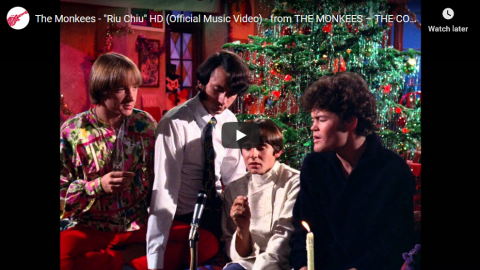In Monday’s NP Platformed newsletter, Colby Cosh paid tribute to the late Michael Nesmith:
Michael Nesmith, the Monkees’ toqued Texan, died on Friday at the age of 78. It’s probably fitting that Nesmith died at a moment when the Beatles are back in the forefront of public consciousness: being hired as a fake Beatle for a television show was the beginning, for him, of an epic American life. It’s a sequence of events that defies belief in retrospect.
The Monkees were a corporate creation — four guys pulled together in order to be vaguely Beatles-like and serve as the public face of a series of glorious hit singles written (and largely played) by others. They had a period of truly enormous stardom, but they began to attract criticism when word of their sham-like nature filtered out into a world of increasing concern with authenticity. Meanwhile, they were themselves revolting against the Monkees machine and its Svengali, Don Kirshner — a revolt of which the sharply intelligent Nesmith was the acknowledged leader.
The Monkees got control of their performing lives — and began to make distinctly inferior records. There is a reason “Last Train to Clarksville” went to number 1 on the charts, and “I’m a Believer” (written by Neil Diamond) went to number 1, and “Daydream Believer” went to number 1, and Nesmith’s “Listen to the Band” went to number 63. Nobody really had much use for authentic Monkees. By all rights they ought to have ended up as Milli Vanilli.
Yet Nesmith had one rock-‘n’-roll standard, one bright gemlike classic, in him. This was “Different Drum”, a record Nesmith had written in 1964 before anyone had invented the Monkees. He couldn’t get Kirshner and his hired tastemakers and arrangers to turn it into an actual Monkees record. It did appear on an episode of the show in 1966, but in an astonishingly humiliating way: Nesmith’s character, “Mike Nesmith”, plays a few bars of it very haltingly while pretending to be an inept country-folk singer, “Billy Roy Hodstetter”.
A country-folk singer was, of course, what Nesmith actually was when not in front of the cameras. The result is a media puzzle worthy of the brainpower of a dozen French deconstructionists. Nesmith, in this handful of seconds, is a real musician in a fake TV band pretending to be a real TV musician on a fake show-within-a-show, mangling his own genuine material.








